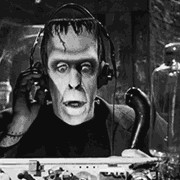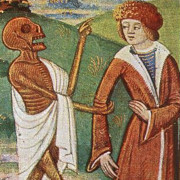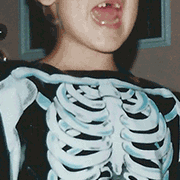|
If there's nothing for tonight, maybe a bunch of educational shorts about the X of the future? those are always good for a laugh. |
|
|
|

|
| # ? Apr 23, 2024 17:03 |
Leraika posted:If there's nothing for tonight, maybe a bunch of educational shorts about the X of the future? those are always good for a laugh. You got it. edit- Also I got the last episode of Fred cued up if anybody wants, https://cytu.be/r/BYOBmovies BoldFrankensteinMir fucked around with this message at 00:32 on Jan 26, 2023
|
|
|
|
|
gently caress it, we're doing ballet night, starting with the avante garde Triadisches Ballet |
|
|
|
i think this is the perfect storm of both bfm and i being busy and distracted and at the end of our ropes and both of us forgetting about tonite. usually one of us at least is doing well and can remind the other but this winter has been hard.
|
|
|
|
hang in there, you two! I'm sure you're both doing the very best you can in your circumstances. i hope life lets up on you a little bit soon, though. |
|
|
|
|
I really liked the ballet.
|
|
|
|
I also liked the ballets we watched, during the movie we discussed the possibility of a whole ballet month but upon consideration maybe we should be more inclusive and have a "Modern Dance March". From what I'm reading that's a better description for the later works of Martha Graham than just ballet, and some of this Graham Technique stuff looks pretty amazing. As for February everybody cool with another dose of Film Noir? This year there is an excellent suggestion to focus on films featuring Black performers and I'm totally down to do the research for that. Also thank you all for your concerns, I'm on the road to better. It has snowed every day for weeks and I'm MAYBE through my annual existential crisis? Hard to say. Winter isn't even halfway done yet. That loving groundhog better play ball this year.
|
|
|
|
|
Also I did NOT forget, I just only had one thing left in my bag of tricks for this month, the cool HBO animated version of Mike Mulligan and his Steam Shovel. It's actually not bad. "No steam shooooovels waanted!"
|
|
|
|
|
Film noir would be great! The ones we watched in the past were enjoyable and interesting in terms of historical significance. |
|
|
|
|
I'm always up for some noir! if you're having trouble finding films with black performers on YT, you could always expand the scope to include other historically underrepresented groups: hispanic, asian, native american, so many more. e: I recognize that black history month is a reason for focusing on black performers first, and that's totally cool. I just know it's sometimes hard to find what you specifically want on the 'tube.
|
|
|
|
BoldFrankensteinMir posted:Also I did NOT forget i fully did, tho' in my defence i worked the night shift preceding and was kind of out of sorts. Manifisto posted:I'm always up for some noir! if you're having trouble finding films with black performers on YT, you could always expand the scope to include other historically underrepresented groups: hispanic, asian, native american, so many more. this is a good idea. we do look at vimeo and other sites that embed but sometimes there is a dearth of material, sometimes there is more on youtube than you realize, like with lucha month.
|
|
|
|
Tonight by popular demand we are going to begin our third installment of Film Noir February, but this time around we're doing something more. For February 2023, Coupons & Deals Movie Nite is going to honor Black History Month as well, by specifically showcasing Black talent in noir cinema. Right up front I want to say this: as a white man I am definitely not the best person available to talk about Black history, Black cinema, or least of all the Black experience, and I am doubly unqualified when also speaking about women's history in those subjects. Generally I get a lot out of our discussions during Film Noir month because I studied it specifically in school, but this month will be harder than it has been before, and I will need help. I do know a little bit about race films, some less intimate aspects of the history of Black cinema and, perhaps most difficult to talk about, its complex relationship to the minstrelsy traditions still at the heart of much of the cinematic language. But I am far from an expert on any of those things. I'll be blunt: the only info I'm gonna be able to provide this month really is just basic facts and dates that anybody can look up. For real personal insights into the material, it is my hope that other members of our community will step forward to interpret and illuminate. I look forward to learning from you and from the films we watch together, as always. This month we will also no doubt see and hear images, language and ideas that are outdated, many of which are offensive, even shockingly so. If material we watch here bothers or disturbs you please feel free to say so, or PM me and I will be glad to discuss it privately (though I would suggest that this thread is a welcoming space where people want to know and understand more through the art of storytelling, and discussions here are generally pretty respectable. It's your call). Film Noir, for anyone who needs a quick refresher, was (debatably) a period of cinema history mostly contained between the early nineteen thirties and late nineteen sixties. It is generally recognized as being a highly abstract black and white style of melodrama that borrowed, primarily, from pulp crime-fiction literature and expressionist cinema and stagecraft. It was not a self-aware movement; the name 'film noir' is attached later by academics to describe an aesthetic that came together organically in response to social factors, chief among them The Hays Code, a film industry guide to self-censorship that imposed tight restrictions on cinema for decades. That many of the Hays restrictions are inherently racist and sexist is undeniable; it is important to remember Hays is part of a larger social-engineering movement that popularized eugenics and other "social hygiene" programs that claimed to define humanity's "undesirables", especially any non-white ethnicity but also homosexuals, the differently-abled and the poor. It is far too easy to forget how mainstream these prejudices were and are, but thankfully the artists of the 30s and 40s staged an outright rebellion against them with abstraction as their weapon of choice, rallying behind progressive causes and, ultimately, the allied forces of WWII. Many finer historians than I have noted how artistic movements like noir, jazz, interpretive painting and modern dance made a difference in that conflict, and how artists of color and women artists especially took enormous risks in subverting the forces of censorship hanging directly over them. Through this process abstract arts became fertile ground for statements about the unfair treatment of marginalized people. It is not hyperbole to say these artists both risked their own lives and saved the lives of others making these statements, and we owe them a tremendous debt for their courage and sacrifice. Tonight we will be watching two films from this early era, both starring an important figure in early Black cinema and Black television, Nina Mae McKinney, a performer who I will attempt a more robust write-up on after tonight rather than cheat her now to save time (she was a contemporary of Bill "Bojangles" Robinson and Adelaide Hall and got her big break from King Vidas, so there's a LOT to talk about). First we will see Gang Smashers from 1938:  And then 1939's Straight to Heaven  Both of these films were made by Million Dollar Productions, a company formed for the express purpose of making films with all-Black casts, formed by Ralph Cooper, himself a very important Black performer in early cinema who was also the original master of ceremonies and creator of amateur night at The Apollo Theater. He formed the company with brothers Harry and Leo Popkins (the latter of whom directed Gang Smashers) who would go on after the war to make several noirs including one of my personal favorites we have watched before, D.O.A. Finally, one last content warning even beyond what we've discussed: Gang Smashers is, as far as I am aware, a rare early discussion of "Black-on-Black crime", a very controversial term to this day that I am hesitant to even use but feel obliged to mention. I am very open to any suggestions anyone may have on better ways to discuss this topic. Join us at https://cytu.be/r/BYOBmovies, 4pm PST 7pm EST, tonight and every Wednesday and Saturday this month. There may or may not be shorts beforehand, as our friend Coupon Crab is respectfully on hiatus. BoldFrankensteinMir fucked around with this message at 23:51 on Feb 1, 2023
|
|
|
|
|
|
thank you for your efforts on this bfm, I think this is going to be a fascinating month and I'm looking forward to it!
|
|
|
|
|
Gang Smashers was a pretty nifty movie. Quality filming, great technique, good plot, good actors. Straight to Heaven pales a lot in comparison. It's messy, what little plot is there is barely held together through the whole thing. But it had some really good musical acts, so it wasn't a bad time.
|
|
|
|
i bet it would have been more interesting if the audio was crystal clear. popping and hissing over music i do find charming, but over someone talking about serious things less so.
|
|
|
|
it is important to note, as bfm did in chat, that these are literally the best copies available of these films. they weren't cared for or archived the same way i wish i could pinpoint some sort of reason why.
|
|
|
|
|
Nah, the problems with Straight to Heaven aren't the loss of quality of the preserved digital version we saw (though it certainly didn't help). Even back then I guarantee you people in the audience would barely understand what the characters were saying. This is also from a time when silent movies were still ever present and the filming techniques used in those were still fresh in any film maker's mind, yet none of those tricks seem to have been used here. You can barely tell what story there was because it was badly directed, amateurishly filmed, and the actors had no body language to express much outside of the spoken lines. I mean, Gang Smashers also had image and audio quality problems in the digital version, but the things happening were always clear. That's why the comparison hurts the second movie that much more. The former had professionals working on it, while the latter was a more amateurish work with a lower budget. And that's fine. It is what was possible. |
|
|
|
Gang Smashers was pretty fun. I kinda zoned out during Straight to Heaven. |
|
|
|
|
Leraika posted:Gang Smashers was pretty fun. I kinda zoned out during Straight to Heaven. yeah, very much same. as I said during the film, it seems like Straight to Heaven was conceived of as a showpiece for the entertainers first, bound together by a thin semblance of a plot.
|
|
|
|
Popping and hissing over my posts. |
|
|
|
I'm curious to see how common it is for the musical and variety acts to break up the narrative in race films. If it's extremely common, perhaps it's an example of a polychronic culture difference? I don't know much about the polychronic vs monochronic lens in cultural critique, but it might be relevant.
|
|
|
|
Nina Mae McKinney is not just a very important artist historically, but also a fascinating person at the nexus of a LOT of incredible art, and a critically under-celebrated civil rights figure. Her story is, unsurprisingly, one of prejudice batting down a meteoric rise, and that her stardom was never fully realized is intensely unfair. But that does not detract from her incredible work, it makes it all the more impressive, and thankfully there are signs of modern historians seeking justice for her legacy. I will do my honest best to continue that cause here, there are some conflicting accounts so if better info comes to light later I will update it. Please note that this write-up contains quotations of antique language which is offensive, it is my hope that I have done so with enough care to be respectful to the subject. Here goes. Nina Mae McKinney had a very hard start to her life, but even as Nannie Mayme McKinney, a 12 year old domestic worker in Georgia, she was a talented performer, amazing her first audiences on her delivery bicycle "cutting capers", the slang of the time for a culture of ornate bike stunts. She also appeared in plays at the Lancaster Industrial School, where she gained notoriety for learning every player's lines in full. She moved to Manhattan at 13 to be with her parents, here's a remarkable picture of her at 14 in 1926:  Some accounts say McKinney quit highschool and others say she graduated early, but either way by 15 she had begun singing and dancing in Harlem speakeasies, where she met pianist Porter Granger, regular collaborator of Bessie Smith. He wrote "Dyin' Crap Shooter's Blues" and "The Band'll Play (Who'd A-Thought It?)" for the young girl and the two recorded both at Brunswick studios; they are sadly lost. However she did also record two more songs (under the name "Alice Clinton") for Gennett Records with pianist J. C. Johnson, "Do What You Did Last Night" and "(Since You've Been Gone) There's Been Some Changes Made".  By 16 McKinney was on a Broadway chorus line, the Blackbirds of '28, which ran for more than 500 successful performances at the Liberty Theater and starred Bill "Bojangles" Robinson and Adelaide Hall. At 17, after walking back and forth in front of the casting building all day to get his attention, she convinced Hollywood director King Vidor to give her a (at first small) part in a revolutionary all-Black cast, all-sound musical, 1929's Hallelujah. Before that came out she also sang songs from the Blackbirds review on Radio KHJ with her Hallelujah co-star Daniel L. Haynes and blues legend "Queen" Victoria Regina Spivvey. In 1929, still before Hallelujah came out in theaters, McKinney signed a 5-year contract with MGM, a first for an African-American performer, and on the very same day she became engaged to James Marshall, director of Harlem's Lafayette Theater, (AKA the famous "House Beautiful", the first major New York theater to have integrated audiences back in 1913.) But an even bigger first was waiting for Nina on May 20 of that year, when she attended the premiere of Hallelujah at the Embassy 1 Theater. The film was not a financial hit but it played widely, and as McKinney had ultimately convinced King Vidor (who called her "full of life, full of expression, and just a joy to work with") to cast her in the female lead role, beating out dual legends Ethel Waters and Honey Brown as the cabaret seductress "Chick", she was now the first African-American female actor to hold a principal role in a mainstream film. That legacy by itself is enormous, with the Black Heritage Commemorative Society noting: quote:"...it did establish McKinney as the first of a series of glamorous, light-skinned African American actresses to engage a white, as well as black audience, and set the tone for much of the black musical genre that followed. McKinney broke new ground by portraying a sensual and fully realized young black woman, as opposed to the maids and nannies featured in most films of the time. Her signature dance, known as the “Swanee Shuffle,” was a clear influence on the style of many black actresses who followed, including Dorothy Dandridge and Lena Horne. It is important to point out that, although Hallelujah and King Vidor himself were seen as progressive for their times (and especially in retrospect for the half century following), a modern viewer would probably not see things in nearly the same way. Vidor was celebrated in his day for a "humanitarian" directing style, he gets a lot of praise in old literature for his ethics, but today it's impossible to ignore the harsh stereotypes and especially dismissive white paternalism that run throughout his work.The best thing I can say about Hallelujah and its explosive popularity is that it started a national dance craze called truckin' that was so huge it became its own cultural phenomenon with further songs being written about just how crazy popular it was. Decades later in 1968, cartoonist and Jazz aficionado Robert Crumb would immortalize the whole era again in the first issue of Zap comics, his now ubiquitous "Keep on Truckin''" cartoon. All echoes, radiating patterns of American deconstructionism, emanating straight from Nina Mae McKinney's sensational dance moves, and her electric image of independence.  After Vidor's Oscar nomination, which he did use somewhat as a platform to praise her and her performance widely, Nina Mae McKinney moved to the Hotel Dunbar on Central Avenue in Los Angeles, a vibrant hub of Black culture in the 30's and 40's. Despite her historic five picture deal she ended up in fewer titles, and sometimes only vanishingly briefly. For They Learned About Women (1930) she only featured in one musical number (Harlem Madness, which notably is in Technicolor despite the rest of the film being in black and white, a dubious choice perhaps all things considered, but technically a remarkable feat). She got to actually act in, and even got a card in the trailer for, Reckless (1931), but is buried far downstage of Jean Harlow. The film also features a performance by Allen Clayton Hoskins, best known as Farina in the Our Gang shorts. By 1935, McKinney wasn't even appearing in the films anymore, merely dubbing the singing lines for Jean Harlow, a particularly nasty blow. Although McKinney continued to feature prominently in all-black cast or black-themed films, including Sanders of the River (1935) with Paul Robeson, Dark Waters (1944) and Pinky (1949) (which multiple sources call her finest and we should probably see), she quickly became disgusted at the parts she was offered for films with racially integrated casts, especially the tired old domestic roles she considered demeaning. But even within that limiting niche she was beset by prejudices. Popular Black female character actors of the era, like Hattie McDaniel and Butterfly McQueen, were deemed acceptable in scenes opposite white male actors because they fit the minstrel-era stereotype of black women in subservient, matronly roles. But casting a glamorous leading lady like Nina Mae McKinney opposite white male actors gave studio executives pause, and the gathering forces of regressive American gender and race politics would continue to conspire against her for her entire career. By the late 20's Hollywood, famous for debauchery and high profile crimes, was locked into a struggle with a nationwide net of activist groups and churches that many feared were close to pushing transformative legislation through in Washington, censoring motion pictures at the federal level. Desperate to avoid this, the major studios embarked on a program of self censorship officially called the Motion Picture Production Code, but generally known as the Hays code after Republican politician William Hays, then head of the MPDDA and a practicing Presbytarian elder. Although introduced officially in 1930 the code really got its teeth in 1934, and from that point on it was the unquestionable law of the land. One of the most heinous and disastrous parts of that law was Part II section 6, which reads: quote:"miscegenation (sex relationship between the white and black races) is forbidden" One of the most telling points of the entire code (I recommend TV Tropes' breakdown of it if you want to know more about hateful antique bullshit that still has its fingerprints all over our media) is that the version of interracial relationships Hays and his cronies objected to was specifically the "white and black races". This is a common thread in all manner of "anti-miscegination" laws of the period, and a strong rebuttal to any argument that the people who put them into effect were acting in anything close to good faith. That this hateful noise took a stranglehold on Hollywood exactly as Nina Mae McKinney was attempting to forge the path of an independent leading lady is an infuriatingly common tragedy. But, this is not where her story ends. Nina Mae McKinney is a profound case study in Black excellence not only because of her incredible talents and enormous legacy, or because she is so sadly under-celebrated, but also because she was in the front lines of the arts' war on censorship that defined the early 20th century, especially for artists of color and women, all around the word. In the code era she would begin protesting from within and without MGM, insisting that her name appear in lights over media appearances or simply not showing up to them, and taking reporters to court for racially tinged libel. She traveled to Europe, part of a generation of Black artists who hoped to find better treatment, especially in England, where she set more milestone firsts in Television, before returning the the US and continuing to fight. Even with opportunities stolen from her left and right by some of the foulest institutional injustices in modern history, Nina Mae McKinney fought hard for a spotlight that she was constantly denied. Continued in part II Edit- minor corrections BoldFrankensteinMir fucked around with this message at 04:10 on Feb 4, 2023
|
|
|
|
|
|
fascinating stuff BFM! thanks for the writeup!
|
|
|
|
BoldFrankensteinMir posted:Decades later in 1968, cartoonist and Jazz aficionado Robert Crumb would immortalize the whole era again in the first issue of Zap comics, his now ubiquitous "Keep on Truckin''" cartoon. are you kidding me? i thought my whole life it was a sort of meaningless nonsense phrase. fascinating. very excited for part 2!
|
|
|
|
I found a copy of Pinky, and, the reviews are all very good, it was directed by Kazan and produced by Zanuck but even so, having looked into it more, I dunno. It features a white actor, Jeanne Crain, playing a light-skinned black woman. But it also gets an Oscar nom for Ethel Waters and all the literature says McKinny is transcendent, even though they're both in domestic roles? One might be tempted to question its noir status too if we're being incredibly picky, but the other issues are much more pressing. Thoughts?
|
|
|
|
|
We'll wait on that, it will make more sense after I can dig into more research about Nina Mae McKinney. In the meantime tonight let's watch a film written and directed by a Black artist, 1940's The Notorious Elinor Lee:  This film stars Gladys Williams, Edna Mae Harris and Robert Earl Jones, who, yes, is James Earl Jones' dad. He was actually a really big star in his own right with a VERY long career, he was part of the Harlem Rennaisance and worked with Langston Hughes, and then was in movies so long he has credits in The Sting (1973), Trading Places (1983), and Witness (1985). Also featured is Juano Hernandez, a Puerto Rican actor who had his own long and storied career, and the whole thing is produced by Hubert "The Black Eagle" Julian, a pioneering Black aviator. Unfortunately, the copy I could find of this film only has sound for the first 22 minutes- I guess reels 2 and 3 are only partial. I thought about now showing it but, this section of the film's Wiki page made up my mind: quote:The film had its premiere in Harlem on January 15, 1940. Julian served as the master of ceremonies at the gala opening. Wearing formal clothing including a top hat, white silk gloves and an Inverness cape, Julian cautioned the opening night audience on the film's lack of polish by stating: "Don’t expect the perfection of a Hollywood picture, but know that we’ve done our very best." 4pm PST 7pm EST at https://cytu.be/r/BYOBmovies see you there! Edit- Oh duh I mentioned the director but didn't name him, Oscar Micheaux, super important guy, 44 directorial credits, "the most successful African-American filmmaker of the first half of the 20th century", but I bet he wouldn't mind me mentioning his cast and producer first. Sorry sir! BoldFrankensteinMir fucked around with this message at 00:06 on Feb 5, 2023
|
|
|
|
After watching what we could of the fragmented Notorious Elinor Lee, we are now watching Lying Lips, also by Oscar Micheaux!
|
|
|
|
|
|
That was an amazing write up, BFM! So much context and details for a time in history I know so little about. McKinney owns hard and I'll be happy to learn more about her.
|
|
|
|
Nina Mae McKinney, Part II Please be aware this write-up contains antique language which is offensive. In June 2023 the National Portrait Gallery in London will re-open after a lengthy renovation. This museum devoted to paintings, photography and other records of famous subjects has the largest collection of portraits in the world, over 220,000 of them, along with in-depth information about the "sitters". The museum is an attempt to preserve the provenance of Britain's various traditions and media used to capture the human form. But consider the sole photo of Nina Mae McKinney the archive contains, a picture taken in America in 1935. Her page features no information whatsoever about her other than that she was a "singer and actress" and is tagged for categorization just once, under "diversity". The Portrait Gallery has good reason to remember McKinney better than this. She traveled to England in search of better opportunities in the mid 30s, starred in several British films and was the first African American entertainer to appear on British television (at least!) in early experimental broadcasts. This is a glaring omission for a gallery devoted to the history of human images. During her meteoric rise to international attention Nina Mae McKinney was often called the "Black Clara Bow" after the fellow New Yorker "It" girl who had captured America's heart during the rise of the talkies. But in Europe McKinney would become known as the "Black Garbo" after Swedish superstar Greta Garbo, whose mystique, range and powerful dramatic presence are ultimately a better comparison to McKinney than Bow's girlish flapper aesthetic, only one phase in McKinney's multifaceted career. McKinney's quest for respect from international audiences and industries would take her back and forth between America and Europe, but everywhere she went, she was still thought of as the Black version of a movie star. The subtext, a cruel insinuation that fame itself was an inherently white phenomenon that Black performers could only imitate, was inescapable in white-controlled mass media. Only in newspapers owned and operated by Black editors and staff did the headlines treat McKinney fairly, and in fact dearly, as soon she was to them simply 'Nina Mae'. Meanwhile in 1934, war corespondent turned theater critic Richard Watts wrote plainly in the (white-owned) New York Herald Tribune that Nina Mae McKinney's “exile from the cinema is the result entirely of narrow and intolerant racial matters.” There was no attempt to obfuscate why she was kept out of the spotlight, ever. Everyone knew why.  Nina Mae McKinney went on a three-month European publicity tour for “Hallelujah” starting in 1930 that included Paris, London, Berlin, Monte Carlo and more. She had grown unhappy with the roles being offered to her at MGM in the US, and had started protesting by not showing up to publicity engagements, especially where her name was not in lights. A tour of the American Midwest earlier that year had done more harm than good, culminating in a controversial appearance in Reverend A.W. Nix's now famous "Black Diamond Express to Hell", a series of 6 fiery recorded sermons intended mostly for religious Black audiences (only 2 of which featured McKinney). Author Martha Simmons described the structure of the sermons as: quote:Nix names various stops that a train takes on its way to hell. Stops include Liars Avenue, Drunkardville, and Gambling Tower. Before each stop, Nix intones and thunders the phrase, 'Next station!'. At each stop, he gives the characteristics of the types of people likely to board the Black Diamond Express – gossipers, liars, gamblers, and more". Though commercially successful the sermons were brutalized by critics, including Elisabeth Goldbeck of Motion Picture Classic magazine, who claimed Nina Mae McKinney had "repudiated her race". McKinney appears to have fought back however, as evidenced by the April 5 1930 headline in Afro-American magazine, "Nina Mae McKinney Libeled in Nasty Magazine Article: Film Star Suing Movie Magazine for Damages". Nonetheless, her reputation had taken a serious hit. As McKinney's US prospects seemed to dim both inside and outside MGM's walls, an ascendant movement of prominent Black artists were doing well for themselves in markets like Paris, where Josephine Baker had captivated at the Folies Bergère cabaret and been dubbed the Black Venus and the Black Pearl. The first Black woman in any feature film, the silent Siren of the Tropics (1927), Baker was at her peak in the early 30's at least in terms of publishing, with her most successful song, "J'ai deux amours" released in 1931. When McKinney returned to Paris in 1932 it was perhaps the most friendly environment to her art she had ever encountered. As tempting as it is to associate Nina Mae McKinney and Josephine Baker, both pioneers of cinema and dance who commanded the dance halls of 1930's Europe, one important difference between them further illuminates McKinney's astonishing ambitions. Baker famously renounced her US citizenship in 1937 and was a fierce French nationalist for the rest of her life, but McKinney continued to work on both sides of the Atlantic, on large Hollywood pictures and British features, and shorts and musical projects, as well as a steady schedule of live performances in musical reviews staged around the world, and she continued to have a remarkable impact despite all the forces arrayed against her. In a 1932 Vitaphone short she shares the stage with Eubie Blake and his band, as well as the premiere appearance of Fayard and Harold Nicholas, dancers known professionally as the Nicholas brothers (who would appear with McKinney again in 1936's The Black Network, then in turn the premiere for another performer, Amanda E Randolph, who would go on to be the first African-American performer to feature in a regularly scheduled television show). That year in New York she also headed the "Dear Old Southland" revue, which ran for a week at the Lafayette Theatre. Simultaenously McKinney continued to work in LA, hobnobbing with the greatest musicians of the era including Duke Ellington and Louis Armstrong. Her part in 1931's Safe in Hell for Warner Brothers is relatively small but extremely influential in multiple ways. The film's two Black actors, McKinney and the legendary Clarence Muse (himself the first African American actor to star in a motion picture, 1929's Hearts in Dixie) speak in standard American English, not the script's original self-styled "Negro dialect". It's contested whether the actors requested this change or the director decided to make it independently, but either way the result is a portrayal that TCM described as the "only positive and reputable" figures in the film, a pair of rarely humanizing portrayals. McKinney's performance in Safe in Hell is also highly noteworthy for the song she performs, the original "When It's Sleepy Time Down South", written by Leon René, Otis René and costar Clarence Muse himself. It would go on to be a jazz standard best known as the signature tune of Louis Armstrong, which he recorded almost a hundred times in his career. But Nina Mae McKinney sang it first.  In 1933 McKinney started a four-month's engagement in the revue, "Chocolate & Cream" at the Leicester Square Theatre that was extremely well received, and then in 1934 began a successful tour of the the French Riviera that then continued on into Prague, Budapest and Athens, where the first records of her being referred to as the "Black Garbo" appear. In July of '34 she opened at London's Alhambra Theatre and appeared in her first British film, Kentucky Minstrels, with Harry Clifford Scott and Edward Peter Whaley, better known as comedy duo Scott and Whaley. In his 2005 book Black in the British Frame: The Black Experience in British Film and Television, author Stephen Bourne claims Scott and Whaley are, in Kentucky Minstrels, the first Black performers to take a lead in a British film, making it another landmark Nina Mae McKinney was present for. But all the shorts, songs and bit-parts in the world combined could not add up to the cinematic spotlight Nina Mae McKinney deserved. The idea of a dignified lead role for a Black woman in a racially integrated cast was inherently revolutionary and seemingly could not happen within the code-era Hollywood system, but revolutionary filmmakers did exist and were especially free to make more progressive and academic offerings to European markets. There was perhaps no greater example of this type of artist than McKinney's next co-star, and possibly the only one to ever match her versatility or raw talent: Paul Robeson. Paul Robeson, former NFL player and bass-bariton concert vocalist, got his start in the theater in two Eugene O'Neil plays, including as the hand-picked lead for the 1924 New York revival of The Emperor Jones and its subsequent London premiere. With well received performances in Show Boat (where his performance of "Ol' Man River" set the standard for decades) and the first of eventually 3 runs as Othello he established himself as the leading Black actor of both the American and English stage, appearing in his first film for legendary Black director Oscar Micheaux, Body and Soul , in 1925. A filmed version of Emperor Jones in 1933 is sometimes referred to in literature as "the first feature film to feature an African American in a starring role" but as noted before, Clarence Muse might deserve this title more for Hearts in Dixie- regardless, Robeson was a smash success and very popular with the upper crust of London society. He would also go on to be a close personal friend of Albert Einstein for over 20 years. But Robeson was also a staunch proponent of African culture, and a public critic of African Americans who he believed had rejected their own culture. In 1934 he published an essay entitled "I want to be African", outlining his desire to reconnect to those roots: from then on he refused to perform in central European operas because they bore no connection to his personal heritage. Robeson was also a supporter of the Soviet Union, where upon visiting he was quoted as saying "Here I am not a Negro but a human being for the first time in my life ... I walk in full human dignity." It was through formal studies of pan-African culture at the University of London that he became involved in a 1935 production entitled Sanders of the River, an adventure film set in Colonial Nigeria. Director Zoltán Korda agreed with Robeson that the film could portray roots of African American culture with accuracy and dignity, and as research sent a film crew on a four-month tour of remote parts of Africa to record dances and ceremonies. Robeson's involvement, portraying Bosambo, a Nigerian chief, was expressly dependent on the condition that African people would be presented positively. Nina Mae McKinney played Lilongo, Bosambo's wife. However, despite the best intentions of the director and stars, Sanders of the River would not be the beacon of African cultural pride they had hoped for. When called back to Denham studios near London for re-shoots, Robeson and McKinney were dismayed to find the film had been re-cut substantially, so that now it was a full-throated support of the continued colonial rule of African nations. The finished film would even be dedicated to "the handful of white men whose everyday work is an unsung saga of courage and efficiency". Robeson publicly denounced the film, saying he hated it, and claiming it was "...the only film of mine that can be shown in Italy or Germany, for it shows the negro as Fascist states desire him - savage and childish." Even so, Sanders of the River was a significant success, the 11th most popular film at the British box office in 1935-36 and popular enough to spawn 3 more African films by Korda in series. Robeson attempted, in vain, to personally purchase and destroy every copy. I can find no record of Nina Mae McKinney's reaction to the film's final form beyond conflicting anecdotes about the pair's discovery of the changes. She could not afford to linger. She had become one of the top cabaret acts in Europe, had been among the first African Americans to perform at the London Palladium, been part of a Royal Command Performance for King George V, and possibly became either the first African American entertainer, or African American person, or Black person to appear on British television (there are conflicting reports that she participated in the February 17th 1933 John Logie Baird television experiment at the London Broadcasting House, or possibly experiments as late as 1935, it may be impossible to say for sure). It is actually entirely reasonable to believe she may be the first Black person to ever appear on television. And yet, none of this ultimately mattered because by the late 30's she could only find roles in race films like 1938's Gang Smashers (also known as Gun Moll) and Black-themed films like 1939's The Devil's Daughter. She was nearly destitute, and in poor health. Nina Mae McKinney would have to return home to the United States and take the sort of roles in bigger, integrated cast films that she had always rejected as beneath her: domestic servants, and other black stereotypes. McKinney would continue to work throughout the 40's for dwindling returns, still trying to find some chance at stardom, until finally ending up a small part of a controversial film so tantalizingly close to what she had been seeking for so long, and yet so perfectly twisted and offensive in its eventual construction, that it is stands as a cruelly ironic milemarker for the Hays Code. 1949's Pinky, directed by Elia Kazan for 20th Century Fox, would stoke a debate on race in casting, the issue that had held McKinney away from stardom her whole life, that is more passionately debated today than ever before. Continued in Part III. Edit- Pinky is NOT McKinney's final film, as pointed out by user Saoshyant: it is merely her last major studio picture. BoldFrankensteinMir fucked around with this message at 21:02 on Mar 4, 2023
|
|
|
|
|
|
great writeup, BFM!
|
|
|
Tonight we're gonna rewatch something we've seen in previous years, but with a different eye towards it: 1949's The Reckless Moment James Mason and Joan Bennett star in this drama, but I am going to be paying special attention to Frances E. Williams as Sybil the maid. This BFI article makes a compelling argument for the potrayal, and especially for the director Max Ophüls' use of mise en scene, and I'm looking forward to seeing how the first African American woman to run for California state assembly treats the part of maid-who-is-always-in-the-background. It sounds like a force to witness. 4pm PST 7pm EST at https://cytu.be/r/BYOBmovies
|
|
|
|
|
Question: do we want to do a Valentine's Day marathon this year? It's a Tuesday.
|
|
|
|
|
|
Manifisto posted:great writeup, BFM! |
|
|
|
|
BoldFrankensteinMir posted:Question: do we want to do a Valentine's Day marathon this year? It's a Tuesday. I'd be up for it, going in and out as needed (and how appropriate for valentine's day!), but don't do it solely on my account.
|
|
|
|
*rolling my dice trying to figure out what thing to show tonite*
|
|
|
 https://cytu.be/r/BYOBmovies right now!!!
|
|
|
|
|

|
|
|
|

|
|
|
|

|
|
|
|

|
| # ? Apr 23, 2024 17:03 |
|
i wonder if the steampunk movies we watched had taken the time to insert like 4 or 5 musical and dance numbers if they'd be considered "good" cause holy gently caress, that was a piece of entertainment and a half, and it seemed to be kinda built around a number of musical and dance numbers with a skeleton plot sort of constructured around them.
|
|
|







































